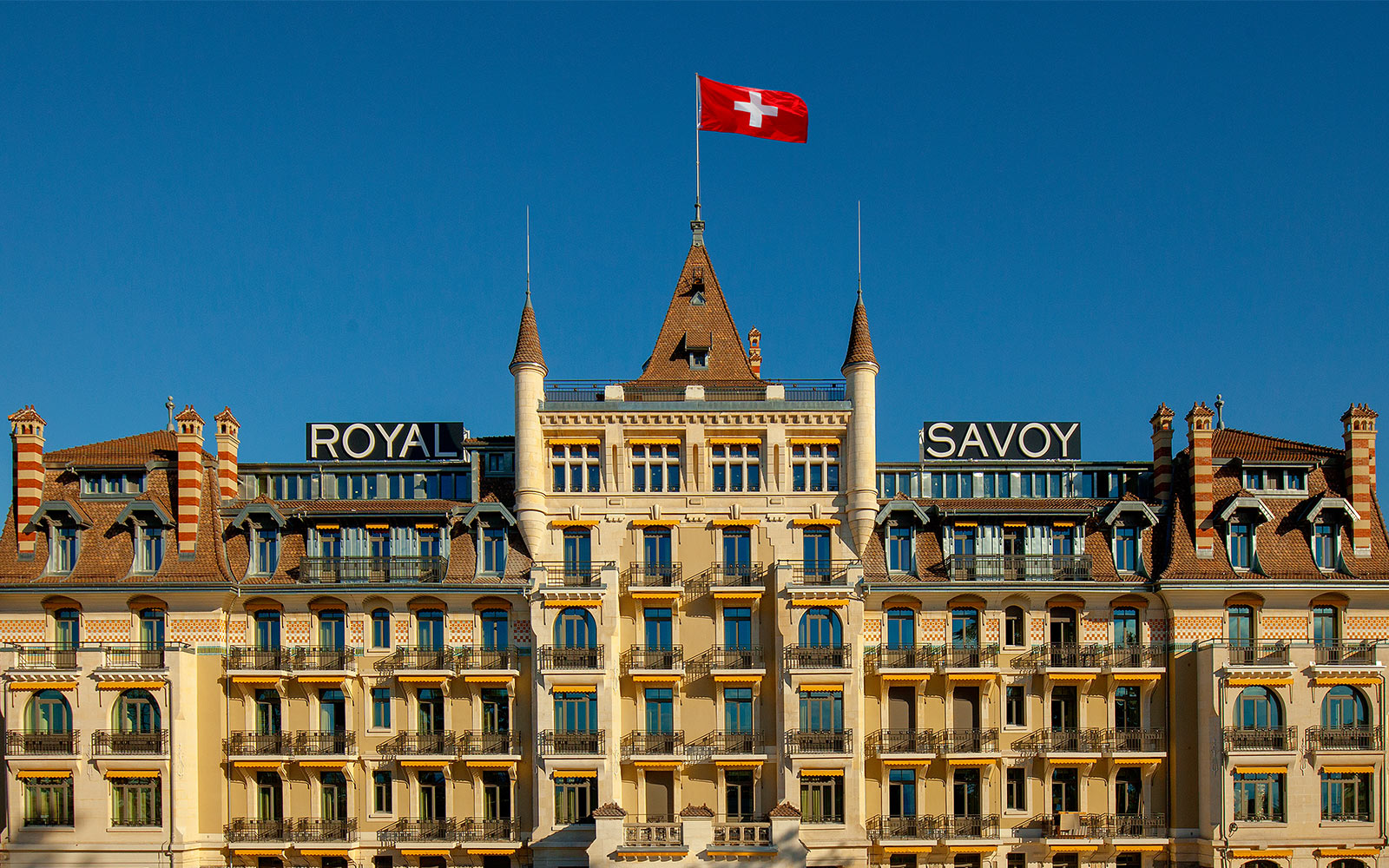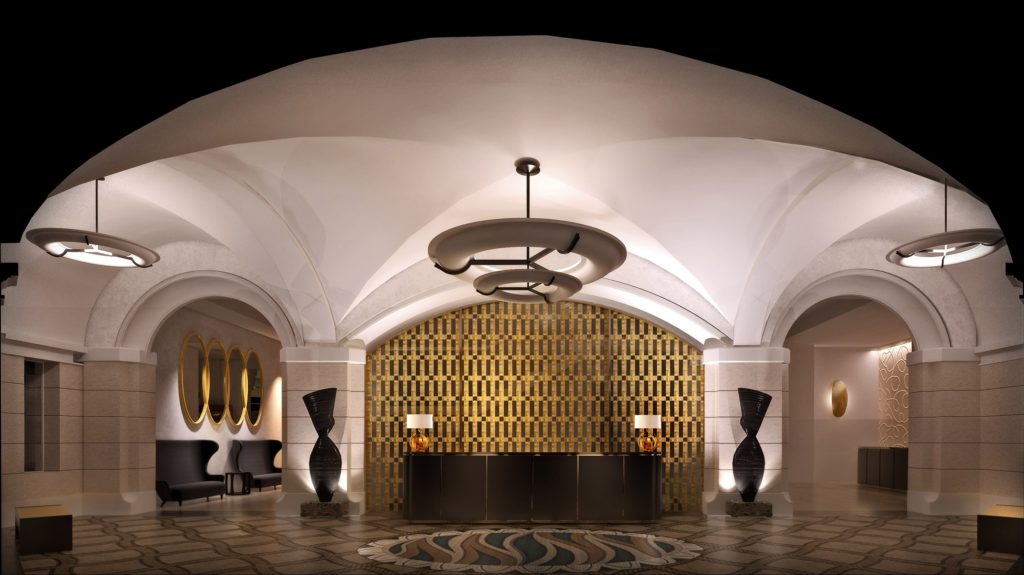
To properly appreciate the Hotel Royal Savoy, a grand hotel reborn this year after a $100 million makeover, you first have to picture its setting in Lausanne. A Swiss city that a Surrealist might have designed, Lausanne is built on a series of exceptionally steep, undulating hills laced with winding streets that resemble bobsled runs and are decked out in textbook Belle Epoque architecture. The views of Lake Geneva, the nearby terraced vineyards of the Lavaux region and the jagged French Alps across the lake can redefine anyone’s concept of “scenic.”
Built in 1906, the Royal Savoy was grand indeed, serving as the haven for the Spanish royal family and King Bhumibol of Thailand during the Second World War, and later for rock royalty like Joe Cocker and Phil Collins, headlining at the nearby Montreux Jazz Festival in the 1990s.
But when I visited 15 years ago, the grande dame had fallen on hard times.
I recall walking through vintage iron gates across a somewhat overgrown lawn to the turreted fairy-tale facade of this Art Nouveau dowager. Inside, it was rich with dusty tilework and huge windows that offered glimpses of the lake and the Alps. It was like stepping into the pages of a vintage Baedeker, but as I sat down in a near empty dining room for breakfast, it was clear that it was a place running on fumes.
Enter the Qatar-based Katara Hospitality company, which stepped in with the deep pockets and willpower needed to return the Royal Savoy to its rightful place as a five-star palace hotel. The elegant facade has been maintained, but inside there has been a massive reconstruction, paving the way for dramatic modern interiors by Maria Vafiadis of MKV Design in London.
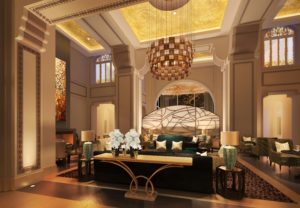 MKV is known for historic renovations of other European grande dames, like the Schweizerhof in Bern, and Vafiadis loves dramatic lighting and clean modernist design, which highlight the grandeur of the hotel’s vast public spaces. The new furniture harkens back to the unrelenting curves of Art Nouveau, and there are nice historic details, like the century-old tiles unearthed during renovation and then restored. Vafiadis has dialed up the inherent theatricality of the period and even flirted with a bit of welcome whimsy, so that the public rooms feel a bit like the Grand Budapest Hotel.
MKV is known for historic renovations of other European grande dames, like the Schweizerhof in Bern, and Vafiadis loves dramatic lighting and clean modernist design, which highlight the grandeur of the hotel’s vast public spaces. The new furniture harkens back to the unrelenting curves of Art Nouveau, and there are nice historic details, like the century-old tiles unearthed during renovation and then restored. Vafiadis has dialed up the inherent theatricality of the period and even flirted with a bit of welcome whimsy, so that the public rooms feel a bit like the Grand Budapest Hotel.
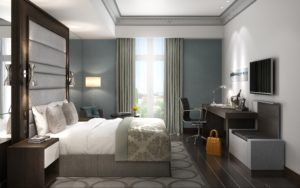 The reborn Royal Savoy has 196 rooms (starting at $358 per night), including 37 suites and junior suites and one exclusive suite on a private floor. The hotel’s new wing is all glass and terraces–midcentury modern cool in a city that was an incubator of 1930s architecture by such masters as Le Corbusier. These rooms have the sleek, edited look that dominates guest rooms in Swiss hotels these days, with striped fabrics to soften all the hardwood surfaces. The overall effect is elegant, discreetly expensive and drama-free–this is Switzerland, after all. The new wing also houses the inevitable spa (or “clinic,” as the Swiss call it), along with a fitness center and indoor-outdoor pool.
The reborn Royal Savoy has 196 rooms (starting at $358 per night), including 37 suites and junior suites and one exclusive suite on a private floor. The hotel’s new wing is all glass and terraces–midcentury modern cool in a city that was an incubator of 1930s architecture by such masters as Le Corbusier. These rooms have the sleek, edited look that dominates guest rooms in Swiss hotels these days, with striped fabrics to soften all the hardwood surfaces. The overall effect is elegant, discreetly expensive and drama-free–this is Switzerland, after all. The new wing also houses the inevitable spa (or “clinic,” as the Swiss call it), along with a fitness center and indoor-outdoor pool.
In a city where Michelin stars are celebrated like military decorations, the Royal Savoy eschewed a tattooed twentysomething chef with a temper and a nitrogen container in hand in favor of the much celebrated veteran Marc Haeberlin, who runs his family’s legendary L’Auberge de l’Ill in Alsace, a restaurant that has retained three Michelin stars since 1967. His domain is the 120-seat main restaurant, built with an open-kitchen concept. There’s also a terrace for dining, a lobby lounge and, best of all, the Sky Terrace on the roof, with a panoramic view of the city, the lake and the Alps, a place where I would gladly linger until they tossed me out.
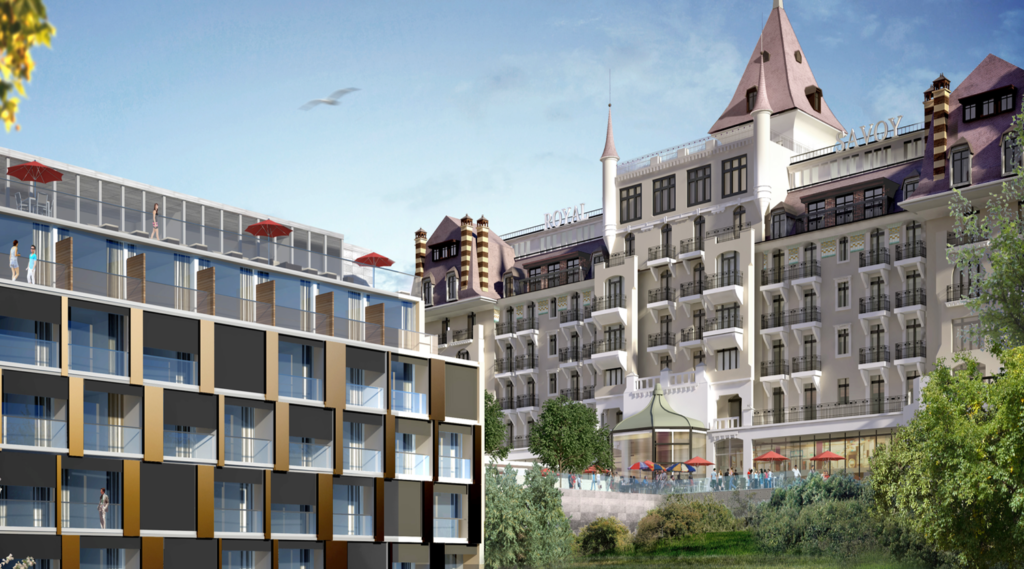
The concept of the classic grand hotel is particularly Swiss, and Lausanne already boasts two of Europe’s best: the Beau Rivage on the waterfront and the Lausanne Palace, atop a hill in the heart of the city. Like a Swiss variation on the Goldilocks story, it’s just possible that the Royal Savoy gets it just right.

